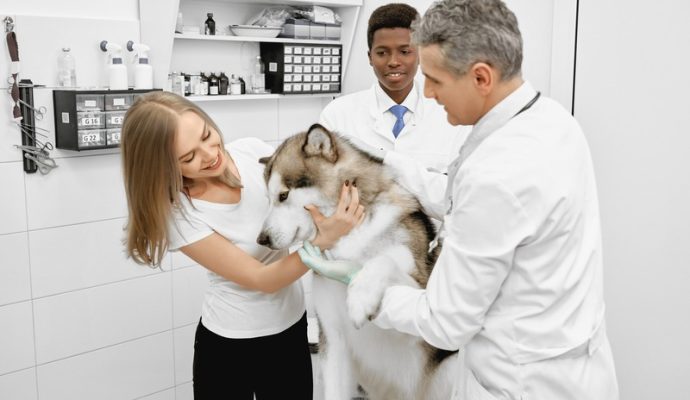Amazingly, animals’ brains can do extraordinary things on their own, like those of humans. The great electrical impulses and connections (trillions of them) that control the entire body are located there. Given the interconnected nature of the system’s numerous elements, unexpected problems periodically occur. Among these is an irregular electrical activity that triggers epileptic seizures.
Ways to Tell Your Dog Is Having a Seizure
When your dog experiences a seizure, it is difficult to miss (and extremely painful to witness). Usual seizure signs and symptoms include unconsciousness and “paddling” movements of the legs. Nevertheless, that’s just one phase of a seizure; more stages exist.
In some circumstances, your dog displays subtle indications before a seizure or shows a less severe incident. If you think your pet may be experiencing a seizure, look out for these indicators.
Spacing Out
If your dog unexpectedly stops reacting to you and appears dizzy, this could be an early indicator of a seizure. The first indications are faint. If you suspect your dog is experiencing a seizure, try calling their name to see if they react. Giving your dog their favorite treat or toy is a wise method to obtain their attention. This will prompt a stronger response from them.
They might be disoriented if they do not respond, even if their eyes are open. Every pet owner needs a plan in place for when catastrophe strikes. So, it is always a good idea to have the number of an emergency animal hospital in Orange County, CA, readily available in case of an emergency.
Hiding
One more usual indicator of the initial phase of a seizure in your pet is a search for a quiet or isolated place to hide. Finding techniques to calm the mind is essential, as seizures are caused by their overactivity. It’s possible that dogs will hide right before they experience a seizure to secure themselves from the potentially harmful effects of the seizure-inducing stimulus.
Help your dog locate a dark, silent spot if you think an attack is coming. Seizures in dogs are uncommon, but if you wish to be sure your pet doesn’t get sick with this, you need to see an internal medicine vet in Orange County, CA.
Thrashing
Whole body and brain-involving seizures could result in your dog thrashing and collapsing. This kind of seizure happens more often than any other. Because your dog will likely be thrashing and moving around involuntarily, this can be painful and even damaging to their heads. If your dog suffers from an epileptic seizure, you should not try to confine them.
By trying to confine your dog, you will likely hurt yourself. If your dog has this problem consistently, you must take them to a veterinary diagnostic lab to ensure that a specialist can identify what’s causing the seizures. This will let them give your dog the best chance of survival.
The Takeaway
Getting your pet to a veterinarian as soon as possible and keeping a close eye on them when they have seizures are crucial actions in treating and handling the problem. Always keep in mind to maintain calmness and focus during an attack. It’s also best to let your pet take care of the scenario on their own because your dog will have a seizure whether you want it or not. But, underlying problems that can induce seizures can be identified during routine veterinary examinations.




